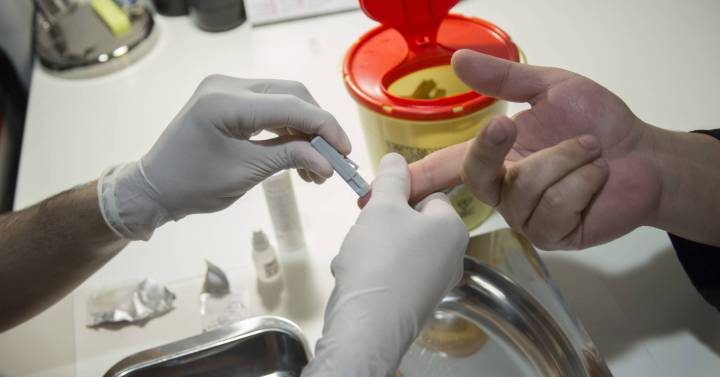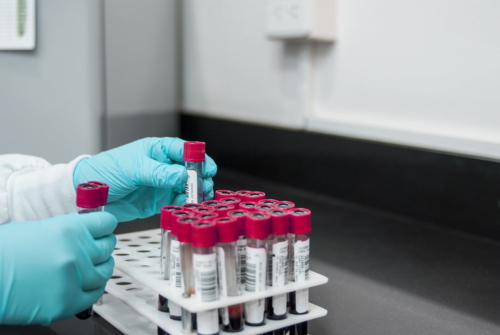
The Supreme Court acquits an HIV-positive person from infecting his partner because she could have deduced that he was a carrier
Although she was not expressly told, the judges understand that the evidence shows that she had the capacity to know that the man had AIDS.
The Supreme Court has acquitted an HIV-positive man who infected his partner while knowing his status, of a crime of bodily harm. Although there is no record of the man ever having reported being a carrier, the court considers that there is evidence to show that the complainant was aware of the situation, so having agreed to have unprotected sex with him, the transmission of the disease “cannot be criminally reproached”.
According to the ruling, the couple began their relationship in 2012. One year later, she was diagnosed with HIV. In 2014, the couple had a heated argument at the home they both shared in Madrid, which led the woman to file a complaint for assault. However, in the text she presented to the authorities, she made no mention of having been infected with the disease, even though she already knew she was a carrier. It was three months after this event that she decided to report her partner for transmitting the disease. The case was brought before a court for violence against women and, subsequently, to the Provincial Court of Madrid. Both bodies acquitted the accused.
Now, the Supreme Court rejected the woman’s appeal, considering that her testimony “was not consistent with the rest of the evidence that has been presented”. In this regard, they take into account the statements of several witnesses. On the one hand, one of the couple’s friends, who said that the whole neighborhood knew that the defendant was a carrier of the virus, so “she must have known.
The Chamber also considers relevant the statement of the sister of the accused, who stated that she had warned the complainant to “protect herself and take action”, to which she replied that nothing was wrong. Although the sister acknowledges that she did not tell him what to protect himself from, she considers that it was clear from the context of the conversation, adding that “when a girl talks to another girl about protecting herself, they implicitly understand each other”. Furthermore, the court notes that the complainant herself acknowledged that in the neighbourhood where they lived and grew up, the man’s state of health was commented on, although she added that when she asked him, he denied it. Furthermore, she acknowledged that several people specifically alerted her to such a circumstance.
Drug use, an extra risk
Furthermore, the judges emphasize that both were consumers of high-risk narcotic substances, so it is “obvious” that the complainant should be aware of the risk she was subject to, “not only through the practice of sexual relations but also by the mere fact of the consumption of such substances.
Also, according to a medical report submitted during the trial, the accused had “pruriginous lesions on the penis”, which were worse when he had sex. For the court, this is external evidence of the disease “that the complainant should have perceived”, especially since she herself was showing similar symptoms months later.
For all these reasons, the Supreme Court concludes that there is a “margin of doubt in favour of the accused” that is decisive for his acquittal. This is precisely one of the guarantees embodied in the right to the presumption of innocence, since our legal system establishes that the guilt of the accused must be proven beyond all reasonable doubt.
El Supremo absuelve a un enfermo de VIH del contagio a su pareja porque ella podía deducir que él era portador
Aunque no consta que se lo comunicara expresamente, los magistrados entienden que las pruebas demuestran que ella tenía capacidad de conocer que el hombre tenía sida.
El Tribunal Supremo ha absuelto de un delito de lesiones a un enfermo de VIH que contagió a su pareja al entender que ella era conocedora de su estado. Aunque no consta que el hombre comunicara en ningún momento que era portador, el tribunal considera que hay pruebas que demuestran que la denunciante estaba al corriente de la situación, por lo que al haber aceptado mantener con él relaciones sexuales sin protección, la transmisión de la enfermedad “no puede ser merecedora de reproche penal”.
Según recoge el fallo, la pareja comenzó su relación sentimental en 2012. Un año más tarde, ella fue diagnosticada de VIH. En 2014, la pareja tuvo una fuerte discusión en el domicilio que ambos compartían en Madrid, lo que la llevó a la mujer a interponer una denuncia por agresión. No obstante, en el texto que presentó ante las autoridades no hizo ninguna mención al contagio de la enfermedad, a pesar de que ya sabía que era portadora. Fue tres meses después de este hecho que se decidió a denunciar a su pareja por la transmisión de la enfermedad. El caso fue llevado ante un juzgado de violencia sobre la mujer y, posteriormente, a la Audiencia Provincial de Madrid. Ambos órganos absolvieron al acusado.
Ahora, el Supremo rechaza el recurso de la mujer al considerar que su testimonio “no es congruente con el resto de las pruebas que se han practicado”. En este sentido, tienen en cuenta las declaraciones de varios testigos. Por un lado, una de las amistades de la pareja, que relató que todo el barrio conocía que el acusado era portador del virus, por lo que “ella debía saberlo”.
La Sala también considera relevante la declaración de la hermana del procesado, que manifestó haber advertido a la denunciante de que se “protegiera y tomara medidas”, a lo que ella respondió que no pasaba nada. Aunque la hermana reconoce que no le indicó de qué se tenía que proteger, considera que por el contexto de la conversación quedaba claro, y añadió que “cuando una chica habla con otra chica de protegerse, implícitamente se entienden”. Además, el tribunal señala que la propia denunciante reconoció que en el barrio donde vivían y se habían criado se comentaba el estado de salud del hombre, si bien matizó que cuando ella le preguntaba, él lo negaba. Además, reconoció que varias personas le alertaron específicamente de tal circunstancia.
Consumir estupefacientes, un riesgo extra
Por otro lado, los magistrados subrayan que ambos eran consumidores de sustancias estupefacientes de alto riesgo, por lo que es “evidente” que la denunciante debería de tener conocimiento del riesgo al que se sometía, “no solo con la práctica de relaciones sexuales sino también por el mero hecho del consumo de sustancias estupefacientes de tal entidad”.
Asimismo, según un informe médico presentado durante el juicio, el acusado presentaba “lesiones pruriginosas en el pene”, que empeoraban cuando tenía relaciones sexuales. Para el tribunal, estas son evidencias externas de la enfermedad “que la denunciante debía haber percibido”, sobre todo teniendo en cuenta que ella misma presentaba síntomas parecidos meses después.
Por todo ello, el Supremo concluye que existe un “margen de duda a favor del acusado” que es determinante de su absolución. Precisamente, esta es una de las garantías que incorpora el derecho a la presunción de inocencia, ya que nuestro ordenamiento establece que la culpabilidad del encausado debe ser demostrada más allá de toda duda razonable.




